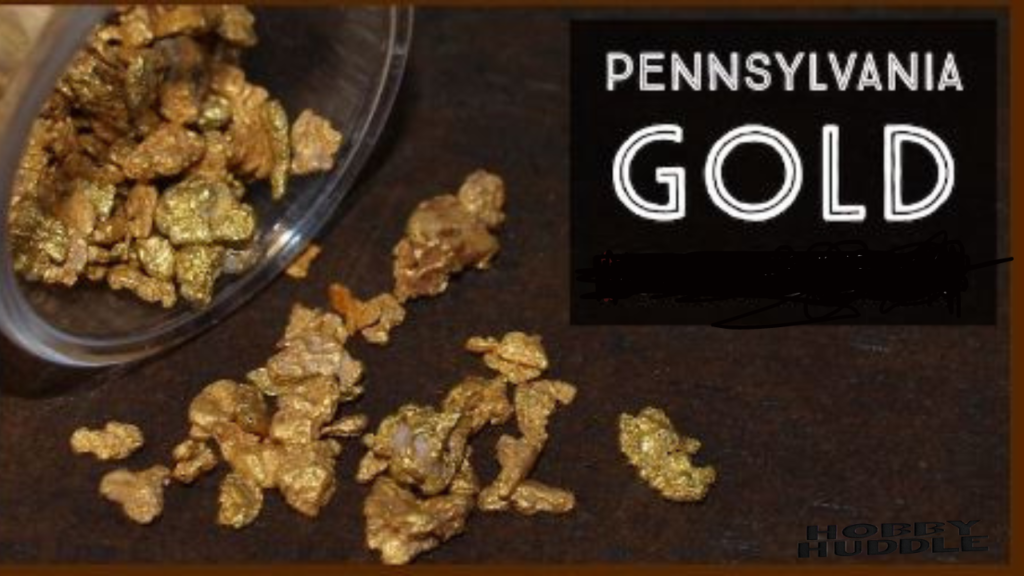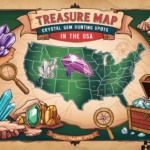Pennsylvania, known for its rich industrial heritage, holds a lesser-known treasure beneath its soil and waters: gold. While not as famous as the goldfields of California or Alaska, the Keystone State has a history of gold discoveries dating back to the 18th century.
Today, recreational gold panning in Pennsylvania offers adventure seekers and history enthusiasts a chance to connect with the land’s geological past while potentially striking it rich.
In this comprehensive guide, we’ll explore the ins and outs of gold panning in Pennsylvania, from its legal landscape to prime prospecting locations. We’ll delve into the essential gear you’ll need, techniques for success, and the vibrant community of gold prospectors in the state. Whether you’re a seasoned panner or a newcomer to the hobby, this guide will equip you with the knowledge to embark on your own gold prospecting adventure in Pennsylvania’s diverse landscapes.
Legal Landscape Navigating Pennsylvania’s Gold Panning Regulations
Before you grab your pan and head to the nearest stream, it’s crucial to understand the legal framework surrounding gold panning in Pennsylvania. The state’s regulations aim to balance recreational opportunities with environmental protection and private property rights.
State Laws and Regulations
In Pennsylvania, recreational gold panning is generally permitted on public lands, but with certain restrictions. The Pennsylvania Department of Conservation and Natural Resources (DCNR) oversees most public lands where gold panning may occur. Here are key points to remember:
- Hand panning is allowed in most state forests and parks without a permit.
- The use of motorized equipment or explosives is strictly prohibited.
- Disturbing stream banks or vegetation is not allowed.
- Prospectors must adhere to Leave No Trace principles.
Federal Lands vs. State Lands
When it comes to federal lands in Pennsylvania, such as the Allegheny National Forest, different rules may apply. Always check with the U.S. Forest Service for specific regulations before panning in these areas. Generally, recreational gold panning is allowed in the Allegheny National Forest, but with similar restrictions to those on state lands.
You Might Like This: Rockhounding in Washington [The Ultimate Guide for 2024]
Private Property Considerations
Many of Pennsylvania’s gold-bearing streams run through private property. It’s essential to obtain written permission from landowners before prospecting on private land. Trespassing can result in legal consequences and damage relationships between prospectors and local communities.
| Land Type | Permission Required | Common Restrictions |
|---|---|---|
| State Parks | No (for hand panning) | No motorized equipment |
| State Forests | No (for hand panning) | No bank disturbance |
| Federal Lands | Check local regulations | Varies by location |
| Private Property | Yes (written) | Set by landowner |
| Game Lands | No (with hunting license) | Seasonal restrictions |
| State Game Lands | No (with hunting license) | No commercial activity |
| Municipal Parks | Check local ordinances | Often prohibited |
| Historical Sites | Usually prohibited | N/A |
Prime Gold Prospecting Locations in Pennsylvania
Pennsylvania’s gold deposits are scattered throughout the state, with certain regions known for more frequent finds. Here’s a rundown of some prime locations for gold panning enthusiasts:

Susquehanna River Basin
The Susquehanna River and its tributaries have long been a hotspot for gold panners. Areas around Williamsport, Lock Haven, and Sunbury are particularly promising. The river’s vast watershed collects gold from various sources, depositing it in sandbars and along the banks.
Delaware River Watershed
The Delaware River, forming Pennsylvania’s eastern border, offers numerous gold panning opportunities. Locations near the Delaware Water Gap and further north towards the New York border have yielded gold for recreational prospectors.
Allegheny National Forest
Located in northwestern Pennsylvania, the Allegheny National Forest is a favorite among gold panners. Streams like Tionesta Creek and its tributaries are known for their gold-bearing gravel. The forest’s diverse terrain provides a scenic backdrop for prospecting adventures.
Lesser-known Hotspots
- Schuylkill River near Reading
- Loyalsock Creek in Lycoming County
- Bald Eagle Creek in Centre County
- Juniata River in Huntingdon County
Remember, successful gold panning often requires exploring beyond well-known locations. Research historical mining areas and geological surveys to uncover hidden gems.
You Might Like This: Gold Panning in Virginia: Everything You Need to Know in 2024
Geology 101 Understanding Pennsylvania’s Gold Deposits
To increase your chances of finding gold in Pennsylvania, it’s essential to understand the state’s geological makeup and how it influences gold deposits.
Types of Gold Found in the State
Pennsylvania’s gold is primarily placer gold, meaning it’s been eroded from its original source and deposited in streams and rivers. The gold found here is typically fine, ranging from small flakes to occasional small nuggets. Lode gold, still in its original vein, is rare but not unheard of in the state.
Geological Formations Favorable for Gold
Gold in Pennsylvania is often associated with quartz veins in metamorphic and igneous rocks. The Appalachian Mountains, which run through the state, were formed by ancient geological processes that brought gold-bearing rocks to the surface. Over millions of years, erosion has distributed this gold into the state’s waterways.
| Rock Type | Gold Association | Common Locations |
|---|---|---|
| Quartz Veins | High | Throughout Appalachians |
| Metamorphic Schist | Moderate | Central PA |
| Igneous Intrusions | Moderate to High | Scattered locations |
| Sedimentary Rocks | Low | Western PA |
| Glacial Deposits | Variable | Northern counties |
| Alluvial Gravels | High | Major river systems |
| Bedrock Cracks | Moderate | Mountain streams |
| Black Sand Deposits | High | River bends |
Reading the Landscape for Potential Gold-Bearing Areas
When prospecting, look for these promising features:
- Bends in rivers where water slows and deposits heavier materials
- Areas downstream from exposed bedrock or quartz outcroppings
- Gravel bars, especially those with lots of black sand
- Cracks and crevices in bedrock where gold can become trapped
Understanding these geological principles will help you target your efforts more effectively, increasing your chances of a successful gold panning expedition in Pennsylvania.
You Might Like This: Dumpster Diving In Indiana [Is It Legal in 2024?]
Essential Gear for Pennsylvania Gold Prospectors
Equipping yourself with the right tools is crucial for a productive and enjoyable gold panning experience in Pennsylvania. Here’s a rundown of essential gear:
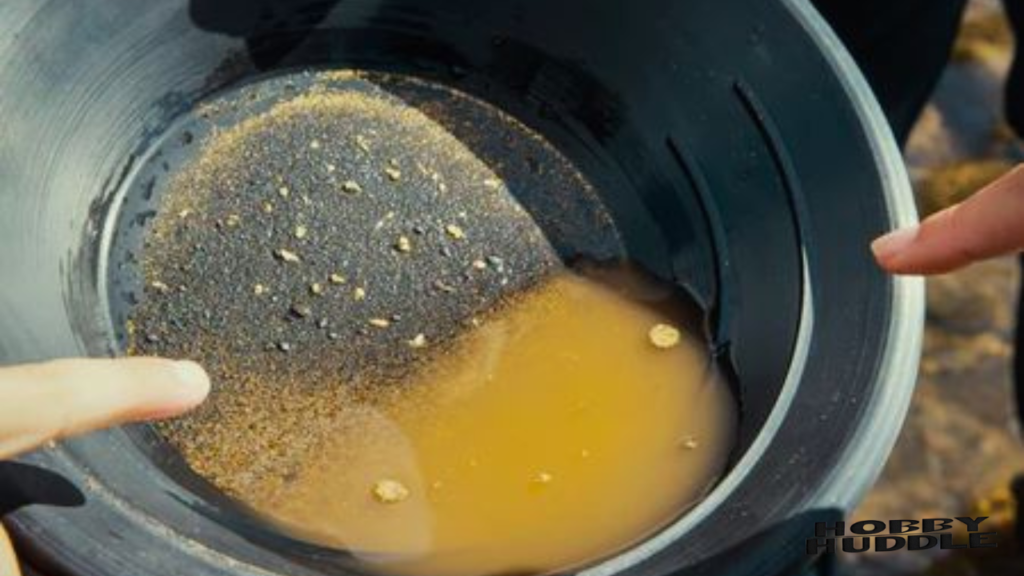
Basic Panning Equipment
- Gold Pan: A sturdy plastic or metal pan with riffles is your primary tool.
- Classifier: This sieve helps you sort material before panning.
- Snuffer Bottle: For collecting fine gold flakes from your pan.
- Tweezers: Useful for picking up tiny gold pieces.
- Vials: To safely store your gold finds.
Sluice Boxes and Other Small-Scale Tools
While motorized equipment is generally prohibited, hand-operated sluice boxes can be effective in Pennsylvania’s streams. These devices allow you to process more material than panning alone. Other useful tools include:
- Rock Hammer: For breaking apart larger rocks or clearing obstacles.
- Crevicing Tools: To extract gold from tight spots in bedrock.
- Gold Pans with Magnets: Helpful for separating gold from black sand.
Safety Gear and Environmental Considerations
- Waders or Sturdy Boots: Essential for working in streams.
- Sun Protection: Hat, sunscreen, and sunglasses.
- First Aid Kit: Always be prepared for minor injuries.
- Gloves: Protect your hands during long panning sessions.
- Trash Bag: For carrying out any litter you find, adhering to Leave No Trace principles.
Remember, the key to successful gold panning in Pennsylvania is not just finding gold, but doing so responsibly and safely.
Techniques for Successful Gold Prospecting in Pennsylvania
Mastering the right techniques can significantly improve your gold recovery rates in Pennsylvania’s waterways. Here are some methods tailored to the state’s unique conditions:
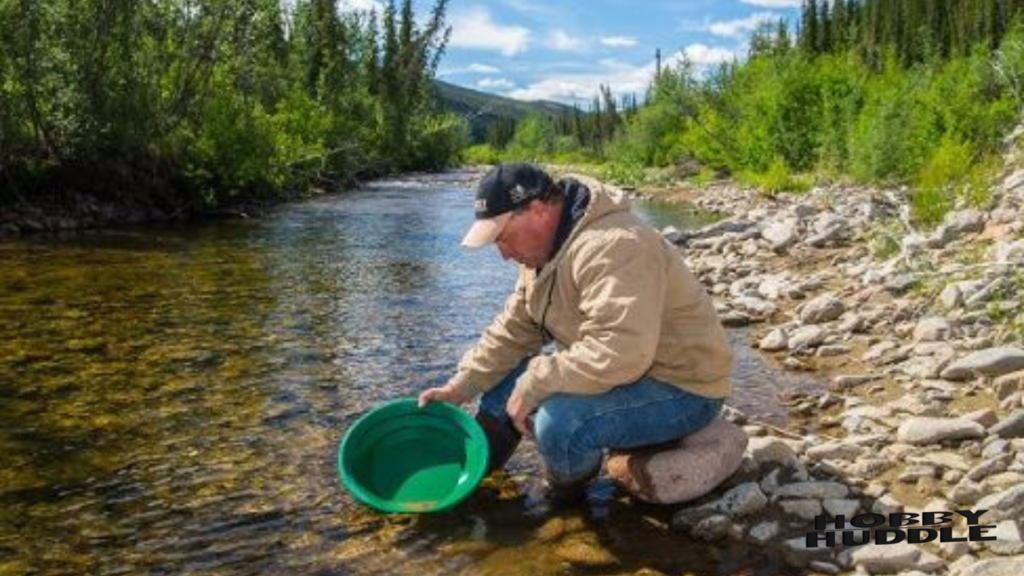
Panning Methods Tailored to Local Conditions
- The “Susquehanna Swirl”: A technique developed for the fine gold common in Pennsylvania. It involves a gentle, circular motion to separate gold from lighter materials.
- Edge Panning: Focusing on the inside bends of rivers where gold tends to accumulate.
- Crevice Panning: Carefully extracting material from bedrock cracks where gold often settles.
Sluicing Strategies for Pennsylvania’s Waterways
While respecting local regulations, small hand-operated sluices can be effective:
- Set your sluice at a slight angle, typically 1 inch drop per foot of length.
- Adjust water flow to move pebbles but not wash out fine gold.
- Focus on processing material from proven gold-bearing areas.
Metal Detecting When and Where It’s Effective
Metal detecting can complement traditional panning in Pennsylvania:
- Best used in dry river beds or along banks during low water periods.
- Focus on areas with historical gold finds or near old mining operations.
- Always obtain necessary permissions and follow local regulations.
| Technique | Best Locations | Pros | Cons |
|---|---|---|---|
| Traditional Panning | Shallow streams | Low cost, portable | Time-consuming |
| Sluicing | Faster-moving water | Processes more material | Heavier equipment |
| Crevicing | Rocky streambeds | Targets high-yield spots | Physically demanding |
| Metal Detecting | Dry riverbeds, banks | Can find larger pieces | Requires permit in some areas |
| Dry Panning | Areas with limited water | Works in more locations | Less effective for fine gold |
| Poop Tubing | Deep river sections | Reaches unexplored areas | Requires specialized gear |
| Sniping | Clear, shallow waters | Highly targeted approach | Requires diving skills |
| High banking | River banks | Processes large volumes | More invasive, check regulations |
By mastering these techniques and adapting them to Pennsylvania’s unique gold deposits, you’ll increase your chances of a successful prospecting adventure.
You Might Like This: 1965 Quarter Coin Value (Errors List & No Mint Mark Worth)
Seasonal Prospecting Maximizing Your Chances Year-Round
Gold panning in Pennsylvania can be a year-round activity, with each season offering unique opportunities and challenges. Understanding these seasonal variations can help you plan your prospecting trips more effectively.
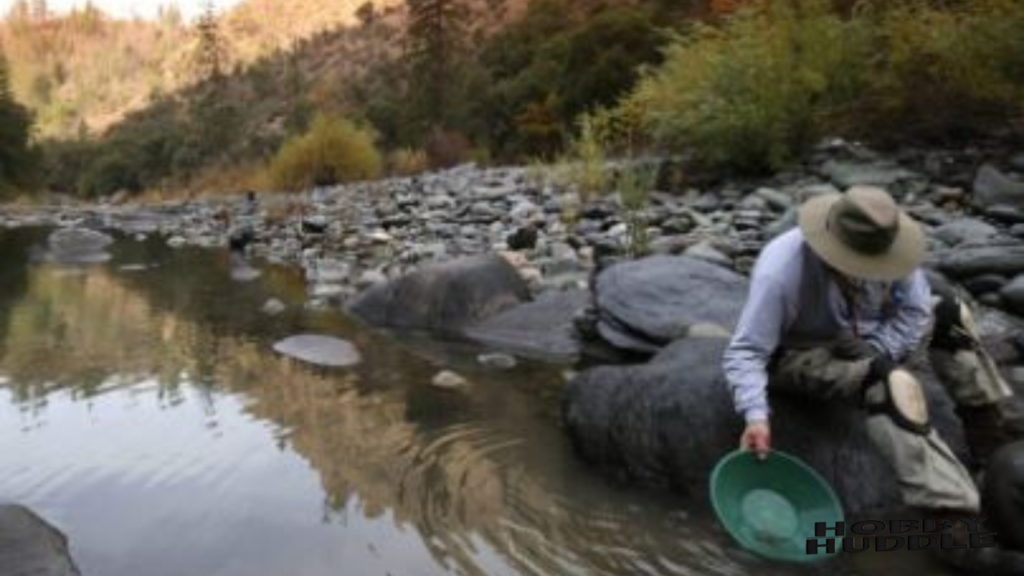
Spring High Water and Fresh Deposits
Spring often brings high water levels due to melting snow and increased rainfall. While this can make some areas inaccessible, it also has benefits:
- Fresh gold deposits are washed into streams and rivers.
- New areas may be exposed as banks erode.
- Focus on areas where floodwaters recede, leaving new deposits.
Summer Low Water and Easier Access
Summer is often the most popular time for gold panning in Pennsylvania:
- Lower water levels provide easier access to streambeds.
- Warmer temperatures make water work more comfortable.
- Long daylight hours allow for extended prospecting sessions.
Fall Comfortable Conditions and Changing Landscapes
Autumn can be an ideal time for gold panning:
- Comfortable temperatures for outdoor work.
- Falling leaves can reveal previously hidden features.
- Less competition as many casual panners have ended their season.
Winter Cold Water Challenges and Unique Opportunities
While challenging, winter prospecting can be rewarding:
- Frozen ground can make accessing certain areas easier.
- Less vegetation allows for better observation of geological features.
- Cold water can be dangerous; proper gear is essential.
| Season | Water Levels | Best Techniques | Key Considerations |
|---|---|---|---|
| Spring | High | Sluicing, Bank Prospecting | Safety in high water |
| Summer | Low | Traditional Panning, Crevicing | Sun protection |
| Fall | Moderate | All techniques | Changing weather |
| Winter | Variable | Sniping, Detecting | Cold water safety |
| Early Spring | Very High | Research, Planning | Flood risks |
| Late Spring | Dropping | Sluicing, Panning | New deposits |
| Early Summer | Moderate | All techniques | Peak season crowds |
| Late Summer | Very Low | Crevicing, Sniping | Limited water access |
| Early Fall | Low to Moderate | All techniques | Perfect conditions |
| Late Fall | Rising | Bank Prospecting, Detecting | Colder waters |
Remember, successful year-round prospecting in Pennsylvania requires adapting your techniques and equipment to the changing seasons. Always prioritize safety, especially when dealing with cold water or challenging weather conditions.
Joining the Community Gold Prospecting Clubs and Events in Pennsylvania
Connecting with fellow gold enthusiasts can enhance your prospecting experience in Pennsylvania. The state boasts a vibrant community of gold panners and prospectors who share knowledge, skills, and the thrill of the hunt.
Local Associations and Their Benefits
Joining a gold prospecting club in Pennsylvania offers numerous advantages:
- Access to group-leased lands for prospecting
- Shared knowledge of productive locations
- Opportunities to learn new techniques
- Social events and group outings
Some notable Pennsylvania gold prospecting clubs include:
- Pennsylvania Gold Prospectors Association (PGPA)
- Keystone Gold Prospectors Association (KGPA)
- Eastern Pennsylvania Prospectors Association (EPPA)
Annual Gold Rush Events and Competitions
Throughout the year, various gold panning events and competitions take place across Pennsylvania:
- PA Gold Rush Days: Usually held in spring, featuring panning contests and workshops
- Summerset Gold Festival: A summer event combining prospecting with family-friendly activities
- Autumn Gold Panning Championship: Competitive event testing speed and accuracy in panning
These events not only offer a chance to test your skills but also to connect with the broader gold prospecting community in Pennsylvania.
Educational Workshops and Field Trips
Many clubs and organizations offer educational opportunities:
- Beginner’s workshops on panning techniques
- Geology seminars focused on Pennsylvania’s gold deposits
- Guided field trips to notable prospecting locations
Participating in these activities can significantly accelerate your learning curve and introduce you to the rich culture of gold prospecting in Pennsylvania.
Environmental Stewardship for Responsible Prospectors
As a gold panner in Pennsylvania, it’s crucial to balance your passion for prospecting with environmental responsibility. The state’s natural beauty and ecological diversity deserve protection, ensuring future generations can enjoy both the thrill of the hunt and the unspoiled wilderness.
Leave No Trace Principles for Gold Panning
Adhering to Leave No Trace principles is essential:
- Plan Ahead and Prepare: Know regulations and pack appropriate gear.
- Travel and Camp on Durable Surfaces: Stick to established trails and campsites.
- Dispose of Waste Properly: Pack out all trash and equipment.
- Leave What You Find: Take only gold, leave nature undisturbed.
- Minimize Campfire Impacts: Use established fire rings or camp stoves.
- Respect Wildlife: Observe from a distance, don’t feed animals.
- Be Considerate of Other Visitors: Yield to others on trails, keep noise levels down.
Protecting Pennsylvania’s Aquatic Ecosystems
Gold panning, when done responsibly, has minimal impact. However, it’s important to:
- Avoid disturbing fish spawning areas, especially during breeding seasons.
- Refill any holes dug during prospecting.
- Don’t use mercury or other harmful chemicals for gold recovery.
- Be cautious of introducing invasive species by cleaning equipment between locations.
Rehabilitating Prospecting Sites
After your prospecting session:
- Smooth out any disturbed areas in the streambed.
- Replace large rocks or logs moved during panning.
- Ensure the area looks as natural as possible when you leave.
By following these guidelines, you’ll help preserve Pennsylvania’s natural beauty and ensure the sustainability of gold panning as a recreational activity in the state.
Beyond Panning Alternative Gold Prospecting Methods in Pennsylvania
While traditional panning remains popular, Pennsylvania’s diverse landscape offers opportunities for other gold prospecting methods. These alternative techniques can be effective in different terrains and conditions across the state.
Drywashing in Certain Areas
Drywashing, a technique typically associated with arid regions, can be useful in Pennsylvania during dry spells or in areas with limited water access:
- Best suited for river banks and old, dry streambeds.
- Relies on air movement to separate gold from lighter materials.
- Requires specialized equipment like a dry washer.
Crevicing and Rock Hounding
Pennsylvania’s rocky streams and exposed bedrock areas are perfect for crevicing:
- Use specialized tools to extract material from cracks and crevices in bedrock.
- Often yields larger gold pieces that have become trapped over time.
- Combine with traditional panning for best results.
Underwater Prospecting
For the more adventurous, underwater prospecting can be rewarding:
- Requires proper training and equipment.
- Focuses on exploring deeper pools and underwater bedrock.
- Often yields virgin ground untouched by land-based prospectors.
Remember, some of these methods may require additional permits or have specific regulations. Always check local laws before employing new prospecting techniques.
The Economics of Recreational Gold Prospecting
While the allure of striking it rich draws many to gold panning, it’s important to approach the hobby with realistic expectations. Understanding the economics of recreational gold prospecting in Pennsylvania can help you appreciate the true value of your experiences.
Realistic Expectations for Finds
In Pennsylvania, gold finds are typically modest compared to famous gold rush locations:
- Most panners find fine gold flakes or small nuggets.
- Large nuggets are rare but not unheard of.
- A successful day might yield a few grams of gold.
| Gold Amount | Approximate Value (2024 prices) | Typical Find Frequency |
|---|---|---|
| 0.1 gram | $6-$8 | Common |
| 0.5 gram | $30-$40 | Occasional |
| 1 gram | $60-$80 | Good day |
| 5 grams | $300-$400 | Excellent find |
| 10 grams | $600-$800 | Rare |
| 1 ounce (31.1g) | $1800-$2000 | Extremely rare |
| 5 ounce nugget | $9000-$10000 | Once in a lifetime |
| 10 ounce nugget | $18000-$20000 | Virtually unheard of |
Valuing the Experience Over the Gold
For most recreational prospectors, the true value lies in:
- The thrill of the hunt and outdoor adventure
- Connection with nature and Pennsylvania’s geology
- Physical exercise and mental relaxation
- Social bonding with family and fellow prospectors
- Learning about local history and earth sciences
These intangible benefits often outweigh the monetary value of gold found.
Potential for Supplementary Income
While not a get-rich-quick scheme, some dedicated prospectors do earn supplementary income:
- Selling gold finds to jewelry makers or collectors
- Offering guided prospecting tours or lessons
- Creating and selling specialized prospecting equipment
- Writing about experiences for prospecting publications
Remember, any income from gold sales may be taxable. Consult a tax professional for advice on reporting prospecting income.
Preserving Pennsylvania’s Gold Rush Heritage
Pennsylvania’s gold prospecting history, while not as famous as California’s or Alaska’s, is rich with stories of discovery, innovation, and perseverance. As modern-day prospectors, we have the opportunity to connect with this heritage and help preserve it for future generations.
Historical Sites and Their Significance
Several locations across Pennsylvania hold historical significance for gold prospecting:
- Potato Creek, McKean County: Site of one of the earliest recorded gold discoveries in PA (1860s).
- Endless Mountains Region: Home to numerous 19th-century prospecting operations.
- Delaware Water Gap: Area of significant placer gold activity in the early 20th century.
Visiting these sites offers a tangible connection to the state’s prospecting past.
Museums and Educational Resources
Pennsylvania boasts several museums and educational centers focusing on its geological and mining history:
- Drake Well Museum, Titusville: While primarily about oil, it offers insights into PA’s extractive industries.
- Pennsylvania Anthracite Heritage Museum, Scranton: Provides context for the state’s mining history.
- Franklin Institute, Philadelphia: Features exhibits on geology and earth sciences.
These institutions play a crucial role in preserving and sharing Pennsylvania’s prospecting heritage.
Connecting Past and Present Through Prospecting
As a modern prospector, you can contribute to preserving this heritage:
- Document your finds and share stories with local historical societies.
- Participate in living history events demonstrating traditional panning techniques.
- Advocate for the preservation of historically significant prospecting sites.
- Educate others about responsible prospecting and its historical context.
By engaging with Pennsylvania’s gold rush heritage, we enrich our own experiences and ensure this fascinating chapter of history is not forgotten.
Troubleshooting Common Challenges for Pennsylvania Gold Prospectors
Even experienced gold panners face challenges in Pennsylvania’s unique prospecting environment. Here are some common issues and how to overcome them:
Dealing with Clay and Heavy Sediment
Pennsylvania’s streams often contain clay and heavy sediment, which can make gold separation difficult:
- Use a classifier to remove larger rocks and break up clay balls.
- Consider using a gold cube or other specialized equipment for heavy clay areas.
- Practice the “drop and shake” technique to settle gold through clay layers.
Accessing Remote Locations Safely
Many promising gold locations in Pennsylvania are off the beaten path:
- Always inform someone of your prospecting plans and expected return time.
- Carry basic survival gear, including a first-aid kit and emergency communication device.
- Study maps and satellite imagery before venturing into unfamiliar areas.
- Consider joining a local prospecting club for group outings to remote locations.
Identifying Fool’s Gold and Other Minerals
Pennsylvania’s streams contain various minerals that can be mistaken for gold:
- Pyrite (fool’s gold): Harder than gold, more brittle, and forms cubic crystals.
- Mica: Flaky and reflective, but much lighter than gold.
- Magnetite: Dark, heavy, but attracted to a magnet unlike gold.
Familiarize yourself with these minerals to avoid disappointment and improve your gold identification skills.
| Mineral | Color | Streak | Hardness | Specific Gravity | Magnetic? |
|---|---|---|---|---|---|
| Gold | Golden yellow | Golden | 2.5-3 | 19.3 | No |
| Pyrite | Brass yellow | Greenish black | 6-6.5 | 5.0 | No |
| Mica | Various, shiny | White | 2.5-4 | 2.7-3.1 | No |
| Magnetite | Black, metallic | Black | 5.5-6.5 | 5.2 | Yes |
| Chalcopyrite | Brass yellow | Greenish black | 3.5-4 | 4.1-4.3 | No |
| Biotite | Dark brown/black | White | 2.5-3 | 2.7-3.1 | No |
| Galena | Lead gray | Lead gray | 2.5-2.75 | 7.4-7.6 | No |
| Hematite | Steel gray to red | Red-brown | 5.5-6.5 | 5.3 | Slightly |
Advanced Prospecting Taking Your Skills to the Next Level
As you gain experience in Pennsylvania’s gold fields, you may want to explore more advanced prospecting techniques. These methods can help you discover new deposits and increase your gold recovery rates.
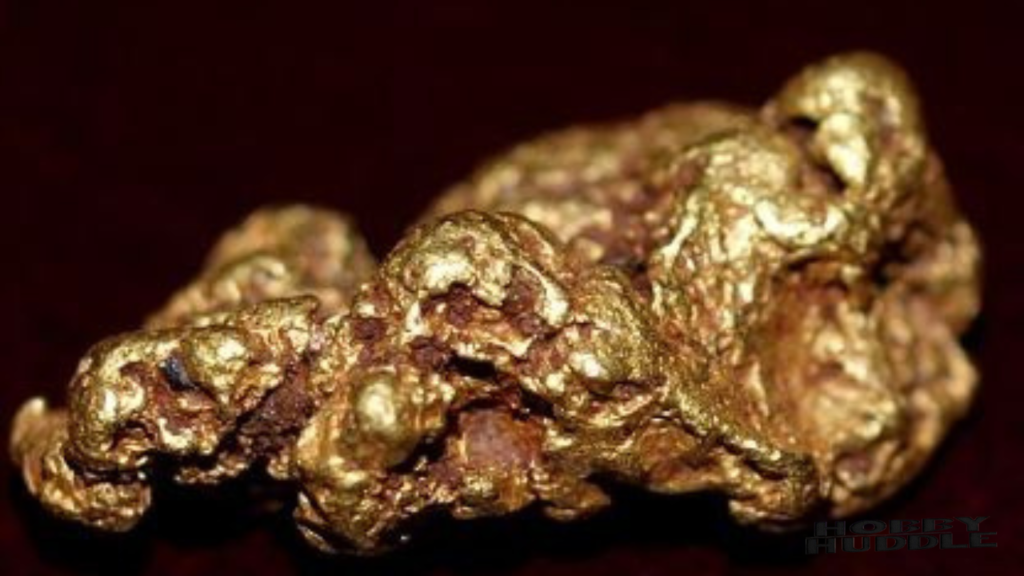
Research Techniques for Finding Undiscovered Deposits
- Study geological maps and reports from the Pennsylvania Geological Survey.
- Analyze historical mining claims and production records.
- Use LiDAR data to identify old stream channels and potential placer deposits.
- Network with local prospectors and join online forums to share information.
Using Technology GPS, Mapping Software, and More
Modern technology can significantly enhance your prospecting efforts:
- GPS devices for precise location tracking and marking promising spots.
- Mapping software like Google Earth to scout potential areas before field visits.
- Metal detectors designed for gold prospecting in mineralized soils.
- Underwater cameras for exploring submerged bedrock and crevices.
Analyzing Samples and Improving Recovery Rates
To maximize your gold recovery:
- Learn basic assaying techniques to estimate gold content in your concentrates.
- Experiment with different recovery methods like blue bowls or spiral wheels.
- Keep detailed records of your finds, including location, techniques used, and results.
- Consider investing in a high-banker or other more advanced equipment for processing larger volumes of material.
Remember, advanced prospecting often requires additional permits or permissions. Always ensure you’re operating within legal and ethical boundaries.
Conclusion The Enduring Appeal of Gold Prospecting in Pennsylvania
Gold prospecting in Pennsylvania offers a unique blend of outdoor adventure, historical connection, and the potential for discovery. While the state may not boast the massive gold deposits of the Western United States, its streams and forests hold secrets waiting to be uncovered by patient and skilled prospectors.
As we’ve explored in this guide, successful gold panning in Pennsylvania requires:
- Understanding the legal landscape and respecting private property rights.
- Knowledge of the state’s geology and prime prospecting locations.
- Mastery of various panning and prospecting techniques.
- The right equipment and safety gear.
- A commitment to environmental stewardship.
- Participation in the wider prospecting community.
Whether you’re drawn by the potential of finding gold or simply enjoy the meditative process of sifting through stream sediments, Pennsylvania’s gold fields offer something for everyone. The true value often lies not in the gold itself, but in the experiences, knowledge, and connections gained along the way.
As you embark on your gold prospecting adventures in the Keystone State, remember to approach each outing with curiosity, respect for nature, and a spirit of responsible exploration. The legacy of Pennsylvania’s gold rush continues through the efforts of modern prospectors like yourself, preserving this fascinating aspect of the state’s heritage for future generations.
Happy prospecting, and may your pan always have a glimmer of gold!

Emma Garcia is a seasoned blogger at Hobby Huddle, where her passion for exploring diverse hobbies shines through her engaging posts. With years of experience in writing and a keen eye for detail, Emma brings readers insightful tips and fresh perspectives on everything from crafts to cooking. Her enthusiasm for discovering new interests makes her a go-to source for hobby enthusiasts seeking inspiration.

